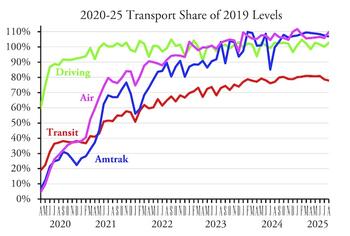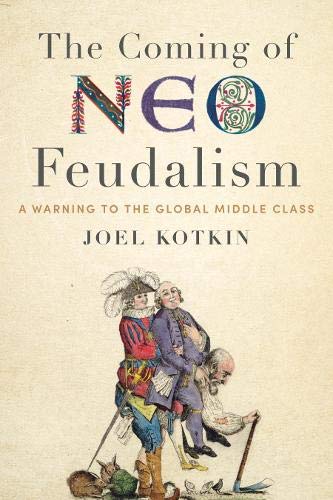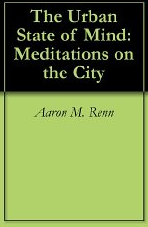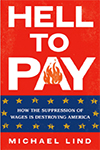
Americans drove 2.8 percent more mores in August 2025 than the same month before the pandemic, according to data released yesterday by the Federal Highway Administration. Apparently, data gathering is just as much an “essential service” in the highway agency as it seems to be in the Federal Transit Administration, which released August transit data earlier this month despite the federal government’s shut-down of non-essential services.
August driving was ahead of 2019 numbers on both urban and rural roads and on all categories of roads tracked by the monthly traffic volume trends: interstates, other arterials, and other roads. Driving exceeded 2019 miles in 30 states, urban driving exceeded 2019 numbers in 31 states, while rural driving exceeded them in 32 states.
Arizona saw the largest increase in driving: 39 percent overall with 26 percent in rural areas and 37 percent in urban areas. (Urban and rural count only driving on arterial roads while totals include driving on collector and local roads.) The next highest was Idaho at 19 percent overall with 21 percent in urban areas and 17 percent rural. Other states with more than a 10 percent increase in driving include Arkansas, Maine, and Texas. The greatest shortfalls were in DC (81%), Delaware (84%), Hawaii (87%), Rhode Island (84%), and West Virginia (89%).
The above chart shows that driving was the first form of transportation to recover from the pandemic, but since then it hasn’t grown as fast as flying or Amtrak. Some analysts think this is because Gen Z — which includes people born between 1997 and 2012 — is driving less than older generations. They may be more likely to work at home, rely on ride-sharing services when they leave home, and associate with friends on-line than in person.
Some of Gen Z’s reluctance to drive is also blamed on the high cost of driving. Previous generations know there are many ways to make driving more affordable, including buying used cars, settling for fewer luxuries, and getting basic rather than more comprehensive insurance. Maybe those techniques don’t work as well as they used to, but I suspect that as Gen Zers age they will increase the amount of driving they do.
This piece first appeared at The Antiplanner.
Randal O'Toole, the Antiplanner, is a policy analyst with nearly 50 years of experience reviewing transportation and land-use plans and the author of The Best-Laid Plans: How Government Planning Harms Your Quality of Life, Your Pocketbook, and Your Future.
Photo: chart courtesy The Antiplanner.












